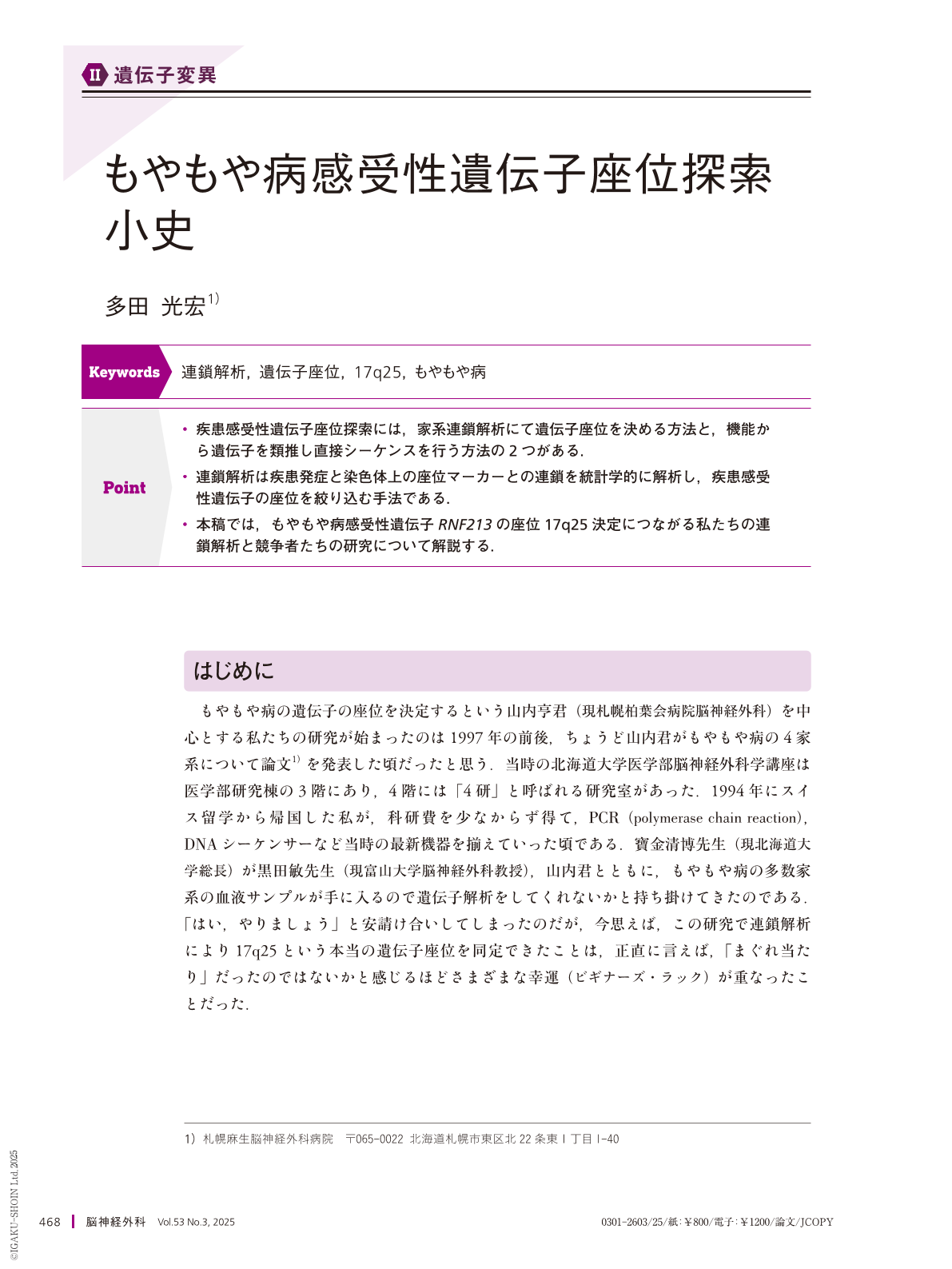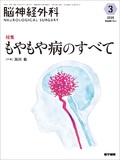Japanese
English
- 有料閲覧
- Abstract 文献概要
- 1ページ目 Look Inside
- 参考文献 Reference
Point
・疾患感受性遺伝子座位探索には,家系連鎖解析にて遺伝子座位を決める方法と,機能から遺伝子を類推し直接シーケンスを行う方法の2つがある.
・連鎖解析は疾患発症と染色体上の座位マーカーとの連鎖を統計学的に解析し,疾患感受性遺伝子の座位を絞り込む手法である.
・本稿では,もやもや病感受性遺伝子RNF213の座位17q25決定につながる私たちの連鎖解析と競争者たちの研究について解説する.
Here, I briefly describe the determination of locus 17q25 on chromosome 17 for a moyamoya disease susceptibility gene, focusing on our study. At the beginning of the study, linkage analysis was challenging. However, our efforts finally achieved statistically significant results at locus 17q25 with a logarithm of odds(LOD) score of 3.11, a maximum LOD score of 4.58, and p-value of 0.00001 with parametric linkage analysis, multipoint analysis, and nonparametric Affected Pedigree Member analysis, respectively. This was due to the good fortune of choosing chromosome 17 as the primary target, given that neurofibromatosis type 1 and moyamoya disease occur simultaneously in some cases. Moreover, our success was largely due to the contributions of our collaborators who precisely determined the disease traits and collected DNA(leukocyte) samples from 103 individuals from 24 families. After our publication in 2000, a research group from Kyoto University searched for the locus 17q25.3 and discovered a mutation in RNF213 gene. Simultaneously, a group from Tohoku University performed a genome-wide association study and determined RNF213 to be a susceptibility gene for moyamoya disease. This occurred 11 years after our first results.

Copyright © 2025, Igaku-Shoin Ltd. All rights reserved.


